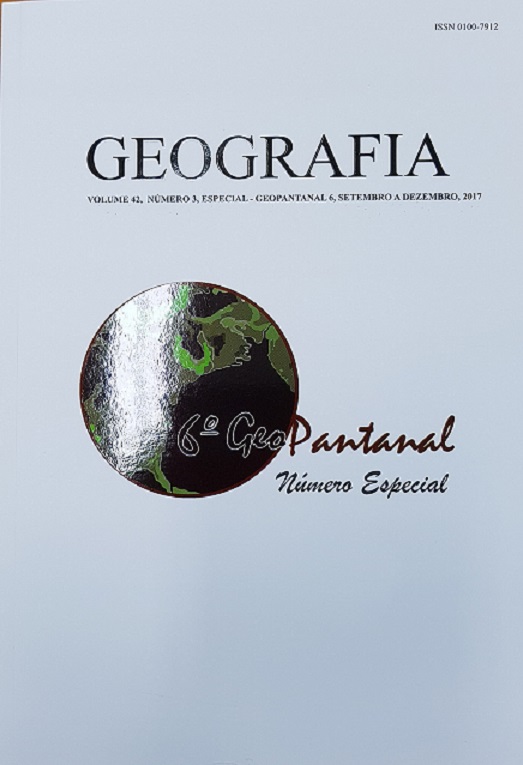MAPPING AND VEGETATION COVER INDEX FROM CÁCERES CITY, MATO GROSSO STATE (MT), BRAZIL
DOI:
https://doi.org/10.5016/geografia.v42i3.13093Abstract
Analyzing the urban space related to its own growth allows to identify the identification of the dynamics of the natural elements and the way the intensified anthropic action shapes and at the same time degrades the landscape, which in the present study is the Pantanal biome. The objective of this study is to use high resolution images and vegetation cover indexes to analyze the urban expansion of Cáceres/MT, and to generate financial support for municipal planning and management. For the execution of this research, remote sensing images and a Geographic Information System (GIS) were used, as well as demographic census data. The urban expansion contributed to the removal of 19.62% of the vegetation and to the increase of 15.28% of anthropic use. The Caceres Vegetation Cover Index is high, with vegetation percentages above 30% occurring in 74.42% of the neighborhoods. From the date of the study on the Index of Vegetation Cover for Inhabitant (ICVH) decreased by 37.20%, remained at 32.55% and increased by 30.25%. It was concluded that an increase in the use of urban space contributed to the reduction of vegetation, as well as the decrease of the population associated to the vegetation of the neighborhoods influenced on the decrease of the ICVHDownloads
Published
Issue
Section
License
The authors maintain the copyright and grant GEOGRAFIA the right of first publication, with the articles simultaneously licensed under the Creative Commons BY 4.0 License, which allows sharing and adapting the articles for any purpose, as long as appropriate credits and provisions of image rights, privacy or moral rights. Other legal attributions can be accessed at: https://creativecommons.org/licenses/by/4.0/legalcode.en.
Geography, Rio Claro, SP, Brazil - eISSN 1983-8700 is licensed under the Creative Commons BY 4.0 License.





